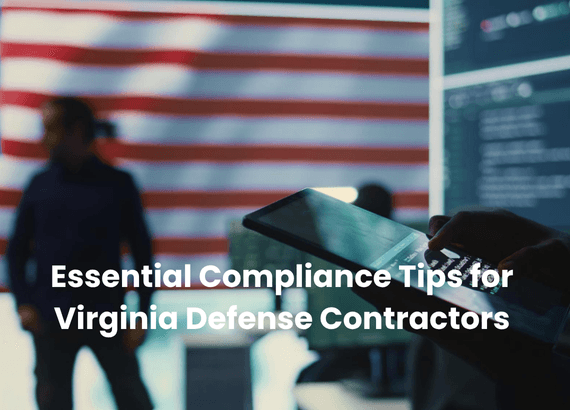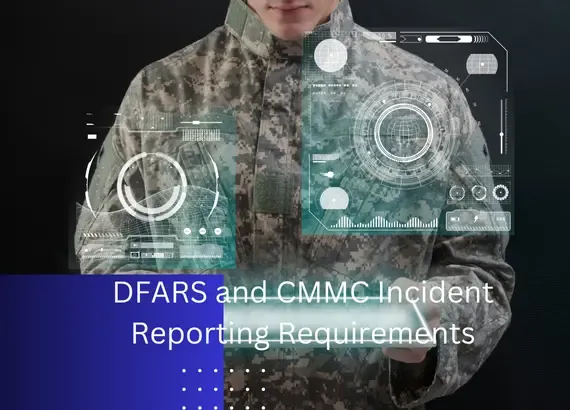
How to Set Up Incident Reporting & Response Plans Under CMMC & DFARS
Introduction: Why Incident Response Is Crucial Under CMMC and DFARS
Cybersecurity breaches are no longer a matter of "if" but "when." For businesses working with the Department of Defense (DOD) or handling Controlled Unclassified Information (CUI), the stakes are even higher.
Under CMMC compliance and DFARS (Defense Federal Acquisition Regulation Supplement), having a well -defined cybersecurity incident management plan isn't optional—it's a contractual obligation.
A swift, documented, and compliant incident response is essential not just to minimize damage but to maintain DOD eligibility, avoid penalties, and demonstrate your commitment to national cybersecurity standards.
Understanding DFARS and CMMC Incident Reporting Requirements
Both DFARS and CMMC (Cybersecurity Maturity Model Certification) mandate that contractors implement and maintain an incident response capability. Here's a brief breakdown:
DFARS 252.204-7012:
Requires DOD contractors to report cyber incidents within 72 hours of discovery.
Mandates the implementation of NIST SP 800-171 security controls.
Contractors must preserve and submit relevant logs and evidence.
CMMC (especially Level 2 & 3):
Requires organizations to develop, document, and maintain an Incident Response Plan (IRP).
Ensures incident handling and reporting procedures are tested and trained.
Evaluates how incidents are tracked, analysed, and learned from. Compliance with these frameworks is essential for winning and retaining DOD contracts.
Key Components of a DFARS & CMMC-Compliant Incident Response Plan
A well-structured CMMC Incident Response Plan should include the following elements:
Roles and Responsibilities
Define the response team and escalation paths.
Incident Categories
Identify what constitutes a "reportable incident" (e.g., phishing, ransom ware, unauthorized access).
Detection and Reporting Procedures
Set up tools and protocols for early threat identification.
Communication Plan
Outline how internal teams, external stakeholders, and the DOD will be informed.
Documentation and Evidence Collection
Ensure incident details, logs, and actions are properly preserved for DFARS reporting.
Post-Incident Analysis
Conduct a root cause analysis and update your System Security Plan (SSP) accordingly.
Step-by-Step Guide to Creating an Incident Response Plan
Here's a practical framework to build your DFARS and CMMC-compliant Incident Response Plan:
Step 1: Assess Risks and Identify Assets
Start by identifying your critical CUI assets and evaluating potential threats.
Step 2: Build Your Incident Response Team
Include IT, compliance, legal, and communication personnel. Assign clear roles.
Step 3: Define Incident Categories and Response Tiers
Differentiate between low, moderate, and high-risk incidents.
Step 4: Draft a Response Workflow
Outline a playbook for detection, containment, eradication, and recovery.
Step 5: Establish Internal and DOD Reporting Protocols
Document when and how to report an incident to DOD via DIBNet within 72 hours.
Step 6: Document and Test the Plan
Conduct table top exercises and simulations to ensure your team can respond effectively.
Explore More: NIST 800-171 & SPRS to CMMC Certification
How to Report Cyber Incidents to DOD: Timelines and Procedures
Under DFARS 252.204-7012, contractors must:
Report cyber incidents within 72 hours of discovery.
Submit reports through the DIBNet
Preserve all relevant logs and data for at least 90 days post-incident.
Allow DOD access to affected systems upon request.
Make sure your plan includes pre-configured incident report templates to reduce response time.
Role of the System Security Plan (SSP) and Plan of Action & Milestones (POA&M)
Your System Security Plan (SSP) should:
Document all NIST 800-171 controls, including IR processes.
Describe how your environment detects, contains, and reports threats.
Your Plan of Action & Milestones (POA&M) is used to track any gaps or ongoing mitigation efforts—this must be updated post-incident to reflect lessons learned and improved controls.
Training Your Team for Effective Incident Detection and Reporting
People are often the weakest link in cybersecurity. That's why training is a critical part of CMMC compliance.
Recommended practices:
Conduct regular cybersecurity awareness sessions
Simulate phishing and ransom ware attacks
Include incident reporting scenarios in team drills
Ensure employees know how and when to escalate a threat
An untrained team is an unprepared team. Turn your employees into your first line of cyber defense.
Common Mistakes to Avoid in Incident Response Planning
Failing to assign responsibility
Ignoring routine testing or updates of the response plan
Not reporting incidents within the DFARS-mandated timeline
Inadequate log preservation or lack of evidence collection
Assuming IT alone handles cybersecurity
Pro tip: Keep your incident response plan aligned with evolving threats and regulations by reviewing its quarterly or after any major incident.
Conclusion: Strengthen Your Compliance Posture with a Robust Incident Response Strategy
In an era where cyber threats are more sophisticated and damaging than ever, your business's ability to detect, respond to, and recover from incidents directly impacts its contract eligibility, reputation, and operational integrity.
By aligning your incident response strategy with CMMC and DFARS requirements, you demonstrate a proactive, security-first approach that's essential in the defense supply chain.
Need Help Building Your CMMC Incident Response Plan?
CMMCITAR helps DOD contractors and IT service providers create robust, fully compliant incident response and cybersecurity plans tailored to CMMC, DFARS, and NIST 800-171 requirements.


